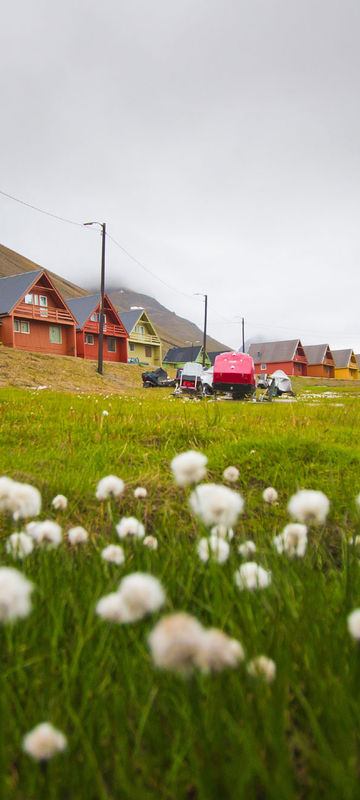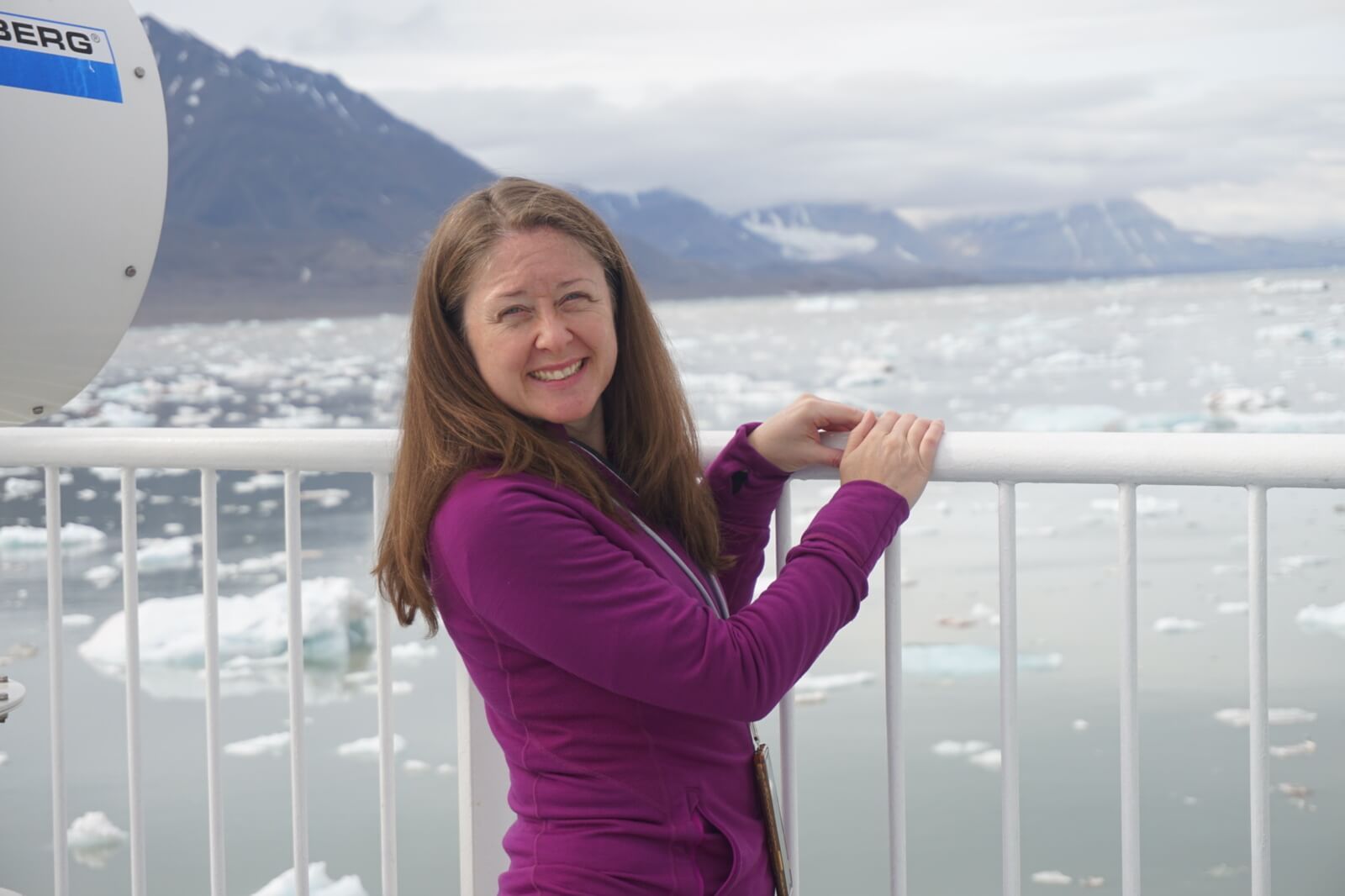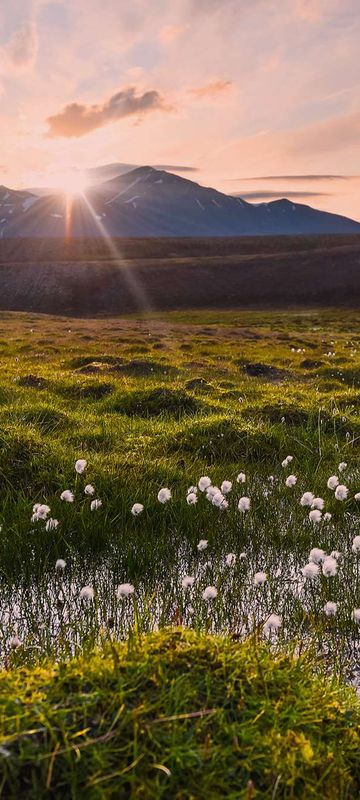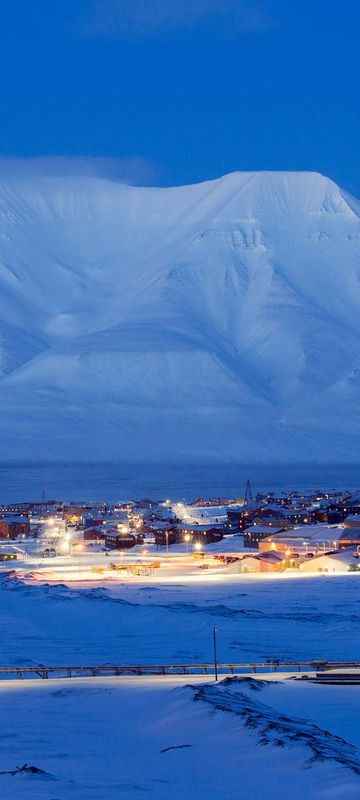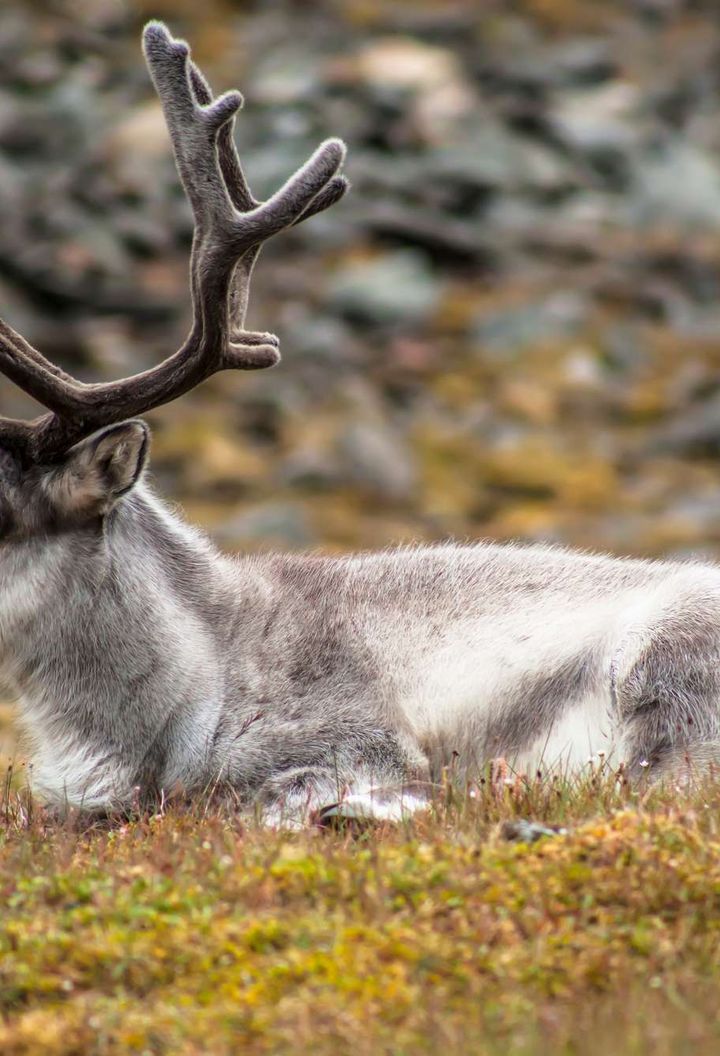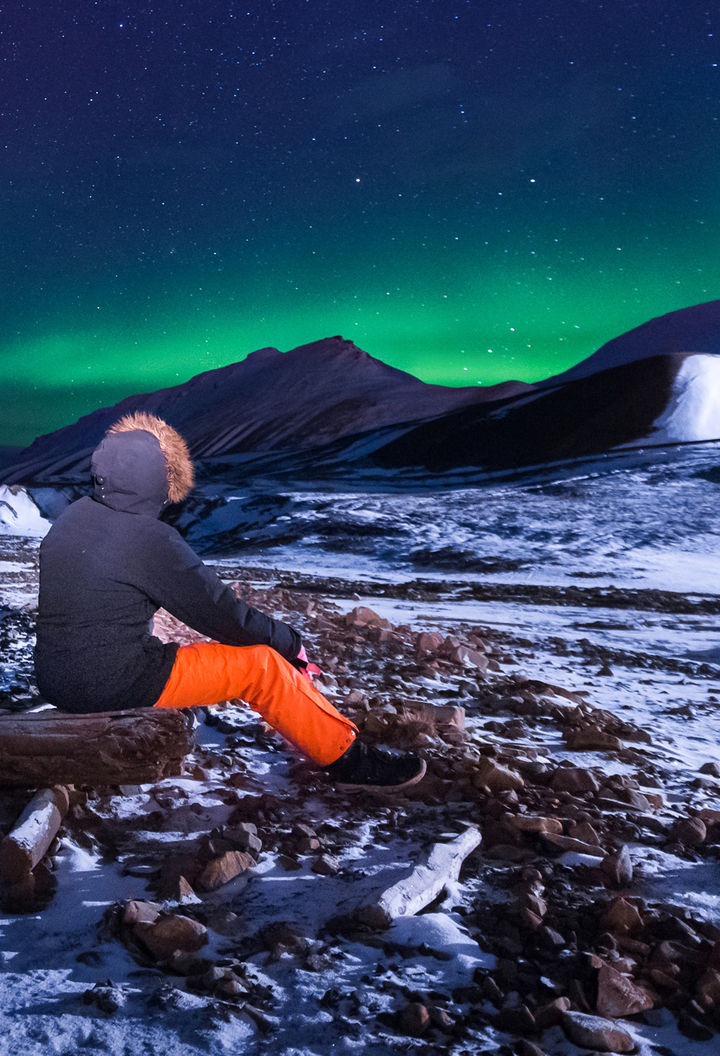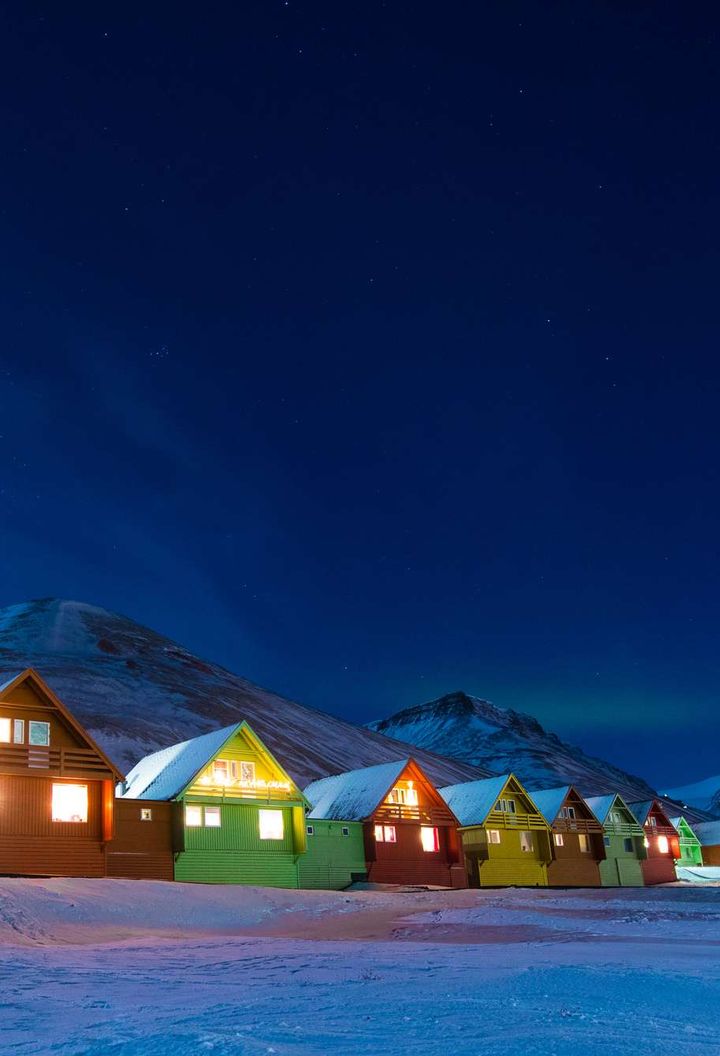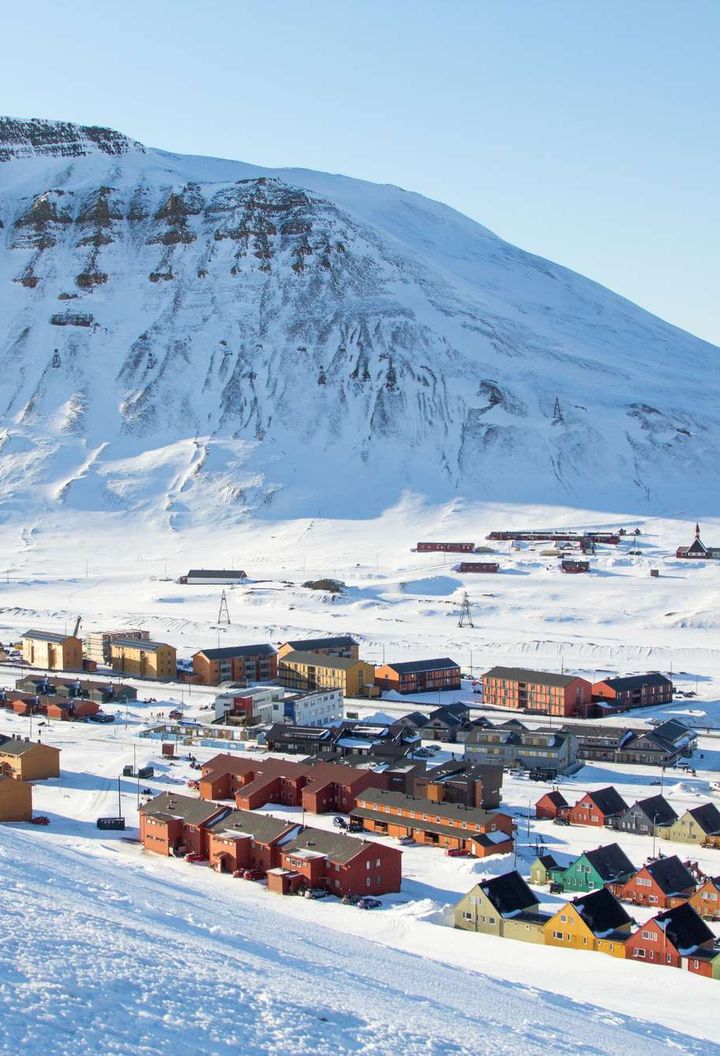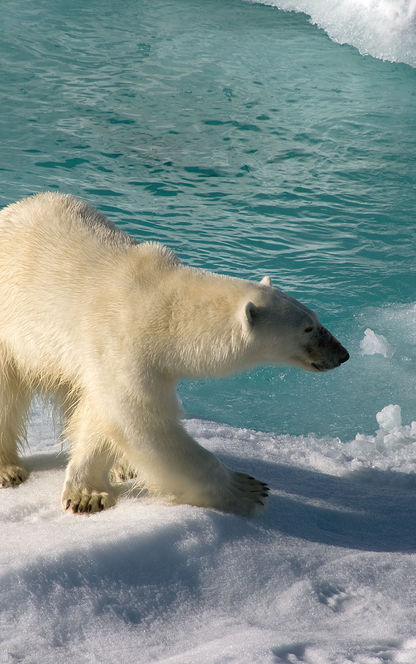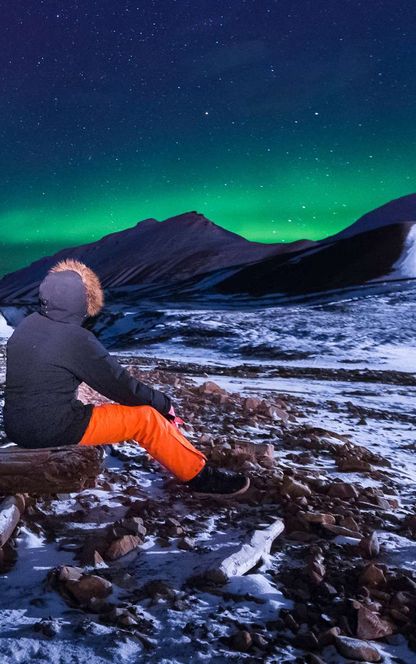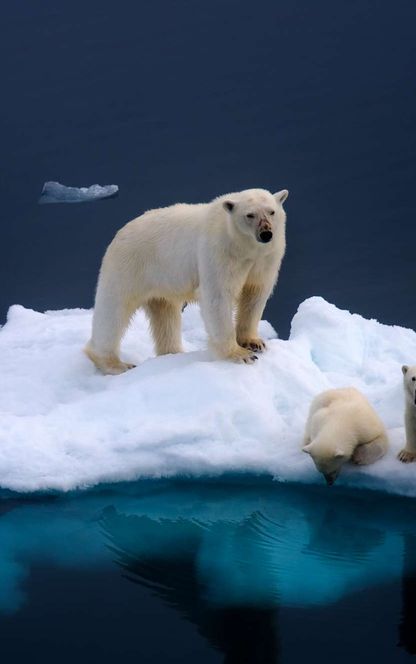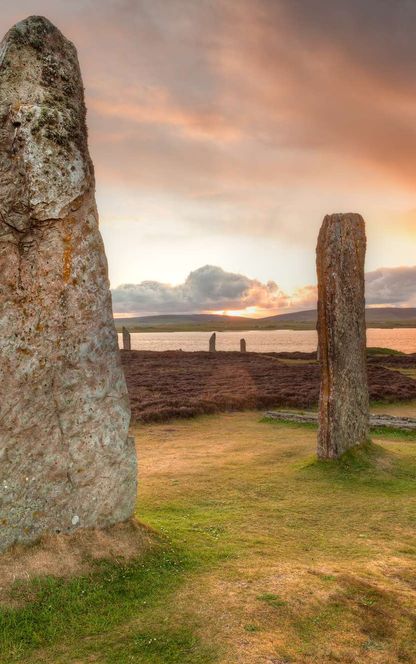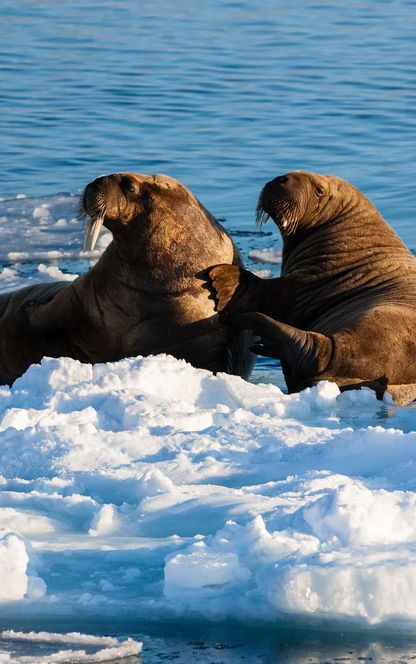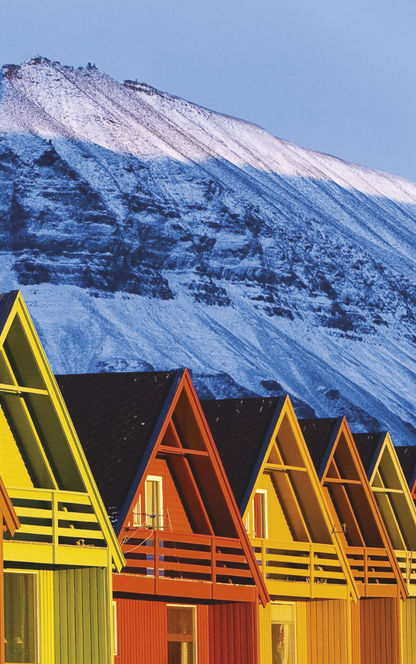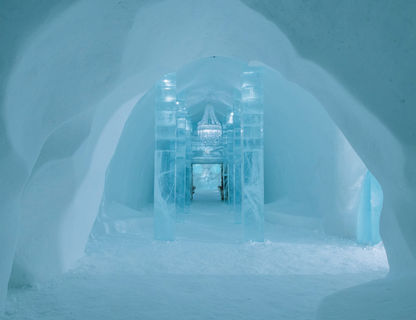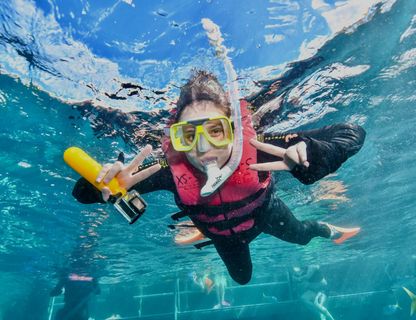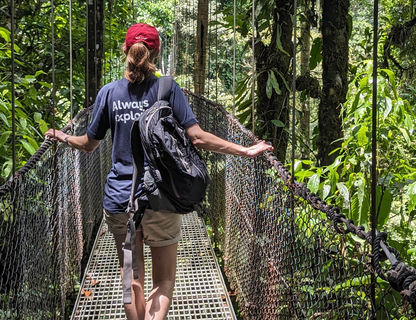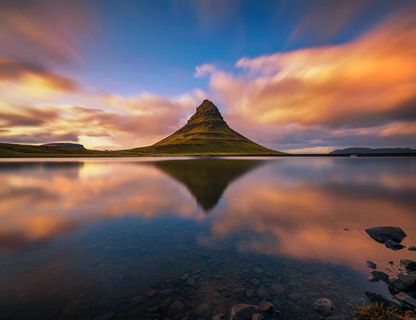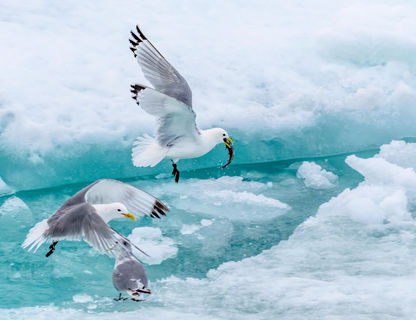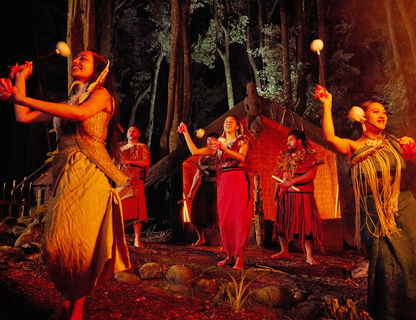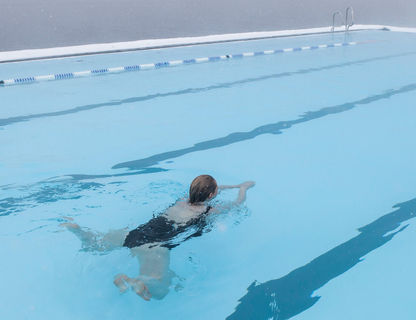Svalbard in Summer (May-Sep)
With warmer temperatures and 24hr daylight, snow quickly starts to disappear in May. As the land becomes exposed, flowers begin appearing along coasts and on mountain slopes. Glaciers creak and groan as they calve icebergs into the fjords, while breeding birds (from geese and swans to Arctic terns and little auks) seize the moment, arriving to breed in their thousands. Arctic foxes are busy rearing their young, polar bears are hunting seals on ice floes and along the shore, while walruses can often be seen hauled out in large numbers on pebbly beaches.
The sea also undergoes a transformation. Fjords that were locked in ice during winter start to free themselves from its icy grip. Several species of whales, including bowhead, beluga, sperm, minke, orca, blue and humpback, are able to access the open areas of water to feed.
Summer is the perfect time to plan a wildlife holiday in Svalbard. Not only is the midnight sun shining from 19 April to 23 August, providing unlimited time for observing fauna and flora, but the break-up of sea-ice allows small-ship polar voyages to navigate around Spitsbergen and other islands in the archipelago. These provide your best chance for polar bear sightings.
Polar voyages are not the only way to experience Svalbard during summer. An alternative is to base yourself in the main settlement of Longyearbyen where a wide range of summer activities are available, such as boat safaris, hiking, kayaking, glacier walks and even dog sledding on wheels. Walruses and whales are frequently seen in Isfjorden (easily accessed from Longyearbyen) and you can also plan trips further afield to wilderness lodges like Nordenskiold and Isfjord Radio.
























